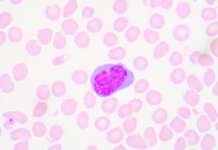Lambert and I both recognize the need to provide a serious treatment of the so-called Biden-Harris Covid plan. However, the new, improved transition version of the scheme is so threadbare compared to the extensive, full bore assault campaign version that the shared elements are few and far between.
First, this new plan isn’t the same as the one on the Biden campaign site. The campaign version had no mention of contact tracing, while this iteration does. But if you simply skim the campaign version versus the president-presumptive one, you’ll see tons of program proposals from the campaign have vanished, like emergency paid leave (with reimbursements to employers), income support for gig workers whose pay has declined, rental assistance, and support for small businesses.
The campaign plan also had sweeping promises about paying for all Covid treatments, not just testing. For instance, this section, by using the term “balance billing” clearly meant it included hospitalizations and emergency room visits:
All copayments, deductibles and any cost-sharing for treatment for COVID-19 for insured. Providers will submit cost-sharing claims to NDMS that document private insurance contractual arrangement for co-payments. To ensure maximum provider participation and minimum billing abuses to consumers, current Medicare law’s “conditions of participation” and system-wide prohibitions against balance billing and surprise medical bills will apply. To guard against fraud and abuse by bad-apple health care providers, harsh civil and monetary penalties under the False Claims Act will apply.
There’s not a peep about any of this in the new version. All it has regarding “treatments,” in context, is new medications to reduce the severity and/or length of a Covid infection, and not, say, being administered oxygen in a hospital:
Plan for the effective, equitable distribution of treatments and vaccines — because development isn’t enough if they aren’t effectively distributed.
The lack of financial support for workers to stay at home because they are sick, quarantined, or just waiting for test results makes it difficult to treat this scheme as serious. And the failure to even ask for the government to cover all Covid treatment costs, not just the kind that can be administered with a needle means a lot of people who have or think they have Covid won’t seek treatment until they are really really ill, increasing the load on hospitals and producing worse outcomes.
And the severe downgrading of his Covid plan shows Biden embracing the Obama playbook: meet the Republicans 75% of the way when you start negotiating, with the expectation that the final deal will move even more in their direction.
Needless to say, leaving financial and health victims of Covid more or less on their own makes it impossible to implement something like the UK’s four-week national lockdown, which shuttered gyms, pubs, restaurants, and non-essential shopping (which includes non-essential goods at retailers like Tesco). Many parts of the US are at or nearing the point where hospitals are getting strained. Once we pass that level, Covid direct and indirect death rates will spike (more will avoid anything short of absolutely essential medical treatment).
And as we’ve previously pointed out, one of the real reasons for the earlier lockdowns was to protect medical professionals. Recall that in many hospitals, doctors of all sorts were pressed into Covid duty. If the US can’t get Covid infection rates down to where hospitals can handle the load, the need to defend the medical system necessitates lockdowns, even if it has only temporary success. It’s too bad no one has a remedy for Covid fatigue.
Let’s now turn to one new wrinkle, contact tracing. From the Biden-Harris Transition site:
Establish a U.S. Public Health Jobs Corps to mobilize at least 100,000 Americans across the country with support from trusted local organizations in communities most at risk to perform culturally competent approaches to contact tracing and protecting at-risk populations.
Hoo boy. First, where did the 100,000 number come from? Admittedly, it’s “at least” 100,000. The US has been at over 100,000 new infections per day since November 4, and that’s with our spotty testing. Health officials are bracing for things to get even worse due to the latest spike continuing (say Halloween parties plus more people going indoors as the weather gets colder) and then worsening after Thanksgiving. How many contact tracers would be needed per infected person to do an adequate job, when we know from Jerri-Lynn’s reporting on contact tracing in Hong Kong, that the contact tracers identified as many as 5,000 contacts from a single case?
Oh, but not to worry. The contact tracing isn’t intended to be comprehensive. It’s only going to target “communities most at risk”. That presumably means the urban poor….but what about American Indians? Rural communities with high outbreak levels due to having the big employer be a transmission vector, like a meatpacking plant?
And that’s before getting to the elephants in the room that we’ve discussed previously. One is that contact tracing is effective when:
1. There is a relatively low overall infection rates so that the cases that are tracked down represent a high proportion of total exposures. That is, it’s possible for the contact tracing exercise to have a serious impact on total contagion levels
2. The contact tracers can find most of the people who were exposed quickly
3. The people who are identified as exposed to Covid isolate for 11-14 days
None of these conditions apply. Even if you generously assume that the new Administration enlisted a big enough contact tracing army to overcome the numbers problem of #1, the other elements needed for a successful program are absent. Most Americans won’t answer a call from an unknown number. Most Americans won’t install a contact tracing app. And governments in South Korea, Singapore, and Australia, where citizens are more cooperative, concluded the apps don’t work. From Foreign Policy:
When a person tests positive for the coronavirus, tracking apps notify other people who have been near the infected person in recent weeks. Singapore’s tracking app is supposed to notify all people who have been within 2 meters of an infected person for at least 30 minutes, while Australia’s app claims to notify people who have been within 1.5 meters for at least 15 minutes. Since Bluetooth can’t actually be used reliably to measure distances, these figures suggest an illusory precision.
The inconsistency between what the apps measure and how the virus spreads puts governments in a bind. Set the time window too narrow, and the app will classify millions of people as possibly infected, requiring the government to track down everyone who has ever passed a coronavirus carrier on the street. Set the time window too wide, and the app will flag too few exposures to the virus. There is no “Goldilocks” zone in the middle of these two extremes.
Set the threshold at 15 or 20 minutes of close proximity to an infected person, and the coronavirus app will identify a moderate number of people for health authorities to contact. But most of the people who have contracted the disease from the infected person casually—that supermarket sneeze comes to mind—will be missed. The other problem is that actual transmission events are rare compared to the number of interactions people have. To find those transmissions, you have to wade through an enormous number of casual contacts, and that means tracking down virtually everyone. Once governments reach that point, they’re no better off than if they had simply relied on effective but labor-intensive human contact tracing in the first place, without the app.
An October New York Times story on why contact tracing was failing in most states confirmed our view that it’s not productive when infection rates are high and highlighted other problems:
Contact tracing, a cornerstone of the public health arsenal to tamp down the coronavirus across the world, has largely failed in the United States; the virus’s pervasiveness and major lags in testing have rendered the system almost pointless. In some regions, large swaths of the population have refused to participate or cannot even be located, further hampering health care workers.
Similarly, a CDC study published last Friday on Delaware’s success in lowering Covid rates found an over two-month “stay at home order” and mask mandate appeared to be effective, with an 82% fall in infections and a reduction of deaths to zero, although the analysis could not parse out the impact of each measure on a stand-alone basis.
By contrast, contact tracing was a bust:
Among 9,762 laboratory-confirmed COVID-19 cases reported during March 11–June 25, 2020, two thirds (6,527; 67%) of patients were interviewed, and 5,823 (60%) reported completing isolation. Among 2,834 contacts reported, 882 (31%) were interviewed and among these contacts, 721 (82%) reported completing quarantine….The median interval from receiving a positive test result to interview was 8 days…Among 6,527 interviewed patients with laboratory-confirmed COVID-19, 5,390 (83%) either refused to name contacts or could not recall contacts.
An eight day delay to the interview? With viral shedding peaking around symptom onset, and then new infections taking an average of five days to incubate, you’d expect the contacts to typically have infected new people even if the tracers had gotten to them immediately. And that’s before getting to 83% of the interviewees not providing contact information.
And we get to the final leg of the contact tracing fail: what happens when people are asked to quarantine? The CDC reports a high compliance rate in Delaware among the very few who actually got the request, but this took place while a lockdown was already on, so slightly stricter compliance presumably would not have been too painful. And the CDC charitably assumes that the self-reported quarantine adherence levels are accurate.
By contrast, with most states largely back to normal, asking someone to quarantine will often imply an income hit. And are they in a housing setup where this is even possible, with a separate bathroom and bedroom and someone able to drop off food at their door? In South Korea, people returning from overseas who had to quarantine were each assigned a public health official who’d check up on them, deliver food, water, cleaning supplies and medication as needed, and would even be housed temporarily if they couldn’t isolate. The US isn’t willing or able to take effective measures.
And don’t get too hopeful about the Pfizer vaccine. Aside from the distribution issues resulting from the need to keep it super cold (discussed at length yesterday in Links), Bloomberg flagged another wee problem:
It’s also important to continue watching those who received the vaccine for years. The messenger RNA technology used in the Pfizer/BioNTech vaccine has never been deployed in humans before.
A Pew survey in September found that about half the Americans would not take a Covid vaccine out of concern over side effects and safety. Relying on a heretofore unused method isn’t a way to encourage confidence. Admittedly there are other vaccines in the pipeline, but the Pfizer vaccine doesn’t look like a magic bullet.
That means the Biden-Harris Administration, like Trump, can’t over-rely on a medical industry save. They need to do some Covid heavy lifting. “Better than Trump” doesn’t cut it. Their current scheme isn’t close to adequate.


















